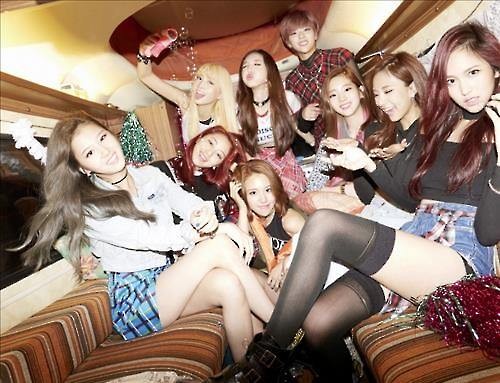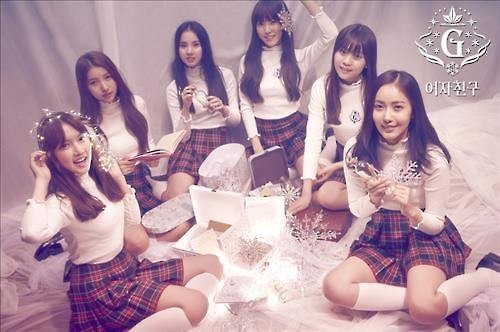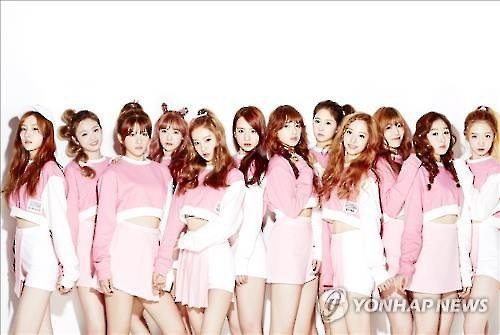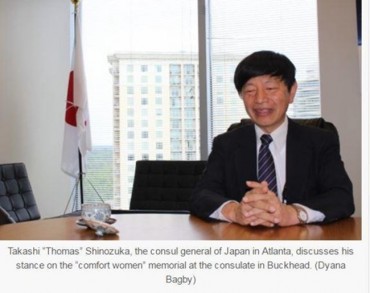SEOUL, March 8 (Korea Bizwire) - The South Korean girl group industry is undergoing a generational shift, with new girl groups expanding their presence in the K-pop power structure.
Almost 20 years has passed since the debut of the “first generational” girl groups — SES of S.M. Entertainment, Babyvox of DR Music and Fin.K.L. of DSP Entertainment – in 1997-1998. Of the three, Babyvox was the last to disband in 2006.
“From the late 1990s to 2014, the girl group industry went through a major systematic upgrading period,” says Korean pop music commentator Seo Jeong Min-gap.
“The days of Fin.K.L. and SES set up a new model for Korean girl groups. Then came the advancement period of the girl group system, in which (agencies) systemically incubate members and turn them into versatile entertainers, skilled in acting, dancing and fashion, as much as in singing. After countless pilot projects and experimental promotions, the K-pop girl group system became capable of promoting distinctive team images and developing individual members at the same time.”
In 2007, a fiery rivalry was born between two girl groups: Girls’ Generation of S.M. and Wonder Girls of JYP Entertainment. They were joined two years later by hip-hop girl group 2NE1 of YG Entertainment. These girl groups had three distinct styles. Wonder Girls were cute, funky and sexy; Girls’ Generation was pure and girly; and 2NE1 was bold, stylish and musically talented — giving fans three unique flavors to sample.
Also in 2009, T-ARA of MBK Entertainment and f(x) of S.M. claimed their portions of the K-pop girl group market.
In 2010, Sistar, miss A and Girl’s Day set sail, establishing sexy as the prevailing concept across the K-pop scene. But in less than five years, their young and sexy image became stale, and they began acting careers in television shows and films.’
In the past two years, girl groups GFriend, TWICE, MAMAMOO, Red Velvet and Cosmic Girls have freshly emerged on the K-pop scene, triumphant in major music charts and music streaming services.
At the zenith of K-pop charts is girl group rookie GFriend, with angelic cuteness as its biggest weapon. Its members — Sowon, Yerin, Eunha, Yuju, SinB and Umji — are aged between 17 and 21.
In less than a month since the launch of its third EP “Rough” on Jan. 25, 2016, GFriend fully reached K-pop stardom, as its third mini album “Snowflake” topped 10 major K-pop music charts in less than a month after its release.
Last year, most of the top hits came from Girls’ Generation, EXO and BigBang, artists of S.M. Entertainment and YG Entertainment — the country’s two leading entertainment agencies by market capital.
GFriend’s songs are characterized as being well-made with familiar, catchy melodies, resembling Japanese animated films’ theme songs, according to multiple critics. The lyrics are about youth, hope, courage, promise and the passage of time. These are also the recurring themes of the anime genre, which maximizes men’s fantasy of feminine obedience and their nostalgic teenage years.
“GFriend’s songs are polished and have a strong sense of completion, especially in the song ‘Me Gustas Tu,’” said Seo, implying that the girl group’s songs are much more than just a collection of addictive phrases.
GFriend’s success did not come overnight, particularly with the rocky road that its agency Source Music has trotted. The girl group debuted in 2015 with its first EP “Seasons of Glass,” as the sole performing artist of the small-sized talent agency Source Music Co., Ltd. Their predecessors — girl group GLAM and mixed vocal band 8eight — disbanded in 2012 and 2007, respectively, adding to the pressure on GFriend and its management.
GFriend does not have many enemies. Much like Harry Potter going from the cupboard under the stairs to the champion of Hogwarts, GFriend took off from a humble nest and soared higher than anyone thought possible. What significantly contributed to its underdog image were photos of its agency’s headquarters — located in a shabby semi-basement — which instantly went viral online.
The most unexpected part of GFriend’s success is, perhaps, the exponential outburst of its popularity after a stage recording video was uploaded by a fan on Youtube last September. The video clip, posted two months after the release of the girl group’s second EP “Flower Bud,” showed GFriend’s less-than-ideal showcase of “Me Gustas Tu.” The members performed on a slippery stage floor that was covered with moths and rain puddles. They were like tumbling dolls, falling eight times. But they kept getting back up.’
TWICE, the biggest rival of GFriend, also has seen its popularity pick up.
The K-pop group is still a fresh face in the industry. It debuted in October 2015, with the mini album “The Story Begins.”
The biggest surprise of TWICE is the long-running popularity of the album’s title song “Like Ooh-Ahh.” The song started off around the top 30, a disappointment for a mega label, but then suddenly picked up and made its way to the top 10. After four months, the song is still in the top 10 on the K-pop chart MelON, one of the country’s largest music streaming and download sites.
At the time of its debut, TWICE was often compared to its predecessors — Wonder Girls and miss A — JYP’s darlings since 2007. But the girl group has outshone the new-look Wonder Girls, who transformed from a girl group to a band, as shown in the popularity of “Like Ooh-Ahh.” The group performs a wide range of genres, including hip-hop, rock ‘n’ roll and R&B, appealing to a wide range of tastes.
Park Jin-young, the chief executive of JYP, has openly vowed that TWICE will grow into a girl group with a “wild and edgy style” on top of its “natural charms, healthy vibe and familiarity.”
TWICE was born in the middle of the fiery competition on “Sixteen,” a televised auditioning reality show. In the show, the applicants were divided into several groups and competed against one another. Winning teams got to vote off opponents, making the audience feel like it was seated at the Colosseum for gladiators’ matches.
But the group’s biggest crisis was not music related.
Aiming at entering the global pop market, JYP let in three international members: Momo, Mina and Tsuyu. Mina is from the Japanese city of Kobe, Mina from Kyoto and Tsuyu from the Taiwanese city of Tainan. The mega label could hardly expect that Tsuyu waving her country’s national flag on an entertainment show would cause an uproar between mainland China and Taiwan. This generated a butterfly effect, with Korea’s diplomatic ties with the two parties souring.
After much hassle, the girl group had its last stage performance of 2015 on Nov. 28 and is currently preparing a new album for a spring return.
Of all the rookie girl groups, MAMAMOO emerged as the group that could sing well. That characteristic, perhaps the most honorable for a rookie all-girl act, truly helped in the release of the group’s second mini album “Pink Funky” in June 2015. The four-member girl group of the entertainment agency Rainbow Bridge World woke up to see its popularity explode with the album’s title song, “Um Oh Ah Yeh.”
The band returned to the K-pop scene last Friday with its first full-length album “Melting,” one year and eight months after its debut in June 2014.
On the first day of its release, the LP’s title track “You’re the Best” topped six major music charts, including Mnet, Bugs Music and Naver Music. The song was crowned No. 4 on MelON’s chart and No. 2 on Olleh Music’s.
Girly, lovely and sexy have been the dominant factors throughout the history of Korean girl groups, but MAMAMOO is not exactly known for being sweet and innocent. Instead, the girl group is not afraid of being bold, candid and, most of all, experimental with its image.
The hallyu girl group sent shockwaves through the K-pop scene with its earlier EP “Um Oh Ah Yeh,” released on June 2015, in which three of its members disguised themselves as men.
The song considerably elevated the public’s awareness of MAMAMOO, making the girl group “concerned about whether its next song will be able to match the former’s success,” according to a press release from its agency.’
Red Velvet of S.M., a cheerful act of five energetic girls, took the baton from Girls’ Generation.
The girl group debuted in August 2014, with the EP “Happiness,” an African-inspired dance track highlighting the group’s quirkness and energy.
A year later, the group shook the K-pop scene with its first full-length album “The Red.” Thanks to its chart-winning title song “Dumb Dumb,” Red Velvet swept up a number of honors, including the best dance performance award of the MNet Asia Music Awards (MAMA).’
Cosmic Girls is the freshest group out of the oven with a cute and marvelous concept.
The 12-member group, with nine Korean members and three Chinese, released its first EP “Would You Like?” on Feb. 25.
Cosmic Girls is the first fruit of the joint project between Starship and Yuehua, a major Chinese talent agency, drawing attention from both Korea and China.
Yuehua Entertainment, based in Beijing, is an entertainment agency of multiple stars, including former Super Junior member Han Kyung (Han Geng) and Zhou Bichang. It also has forged business partnerships with several agencies overseas and has the K-pop girl group After School and boy band NU’EST on its current roster.
The girl group kicked off with a sumptuous pre-debut showcase at a major e-sports event, “KT GiGA Legend Match.” And yet, the girl group’s performance on the local music charts has not been so promising, amid mixed reviews, ranging from “total complication” to “fresh and unique.”
As of Wednesday, the EP’s title song “MOMOMO” had failed to enter the top 100 chart of MelON.
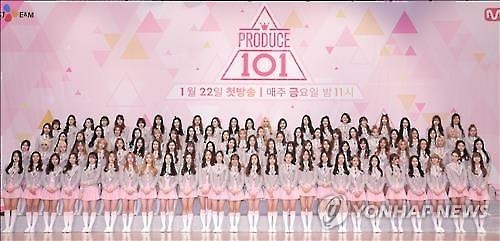
An official poster of “Produce 101,” a new girl group auditioning reality series on Mnet. (Image : Mnet)
In the big picture, experts in K-pop and mass culture agree that this year’s K-pop industry will revolve around girls.
“So far, we have seen a bunch of girl groups with almost identical concepts come and go, one cycle after another,” said Jeong Deok-hyun, a South Korean commentator on mass culture. “If stylish girl groups and sexy girl groups were the main draws in the past, now the demand is for girliness.”
(Yonhap)


